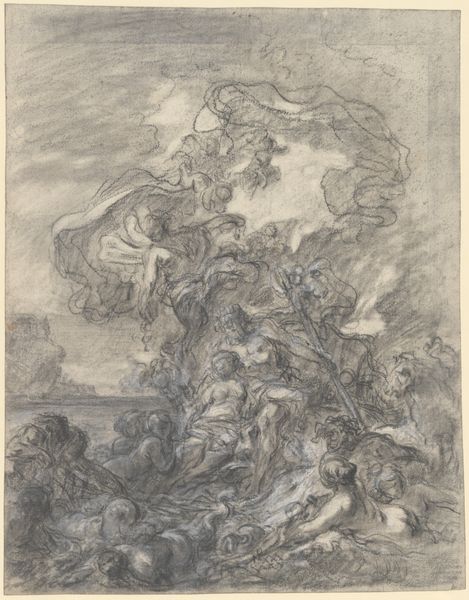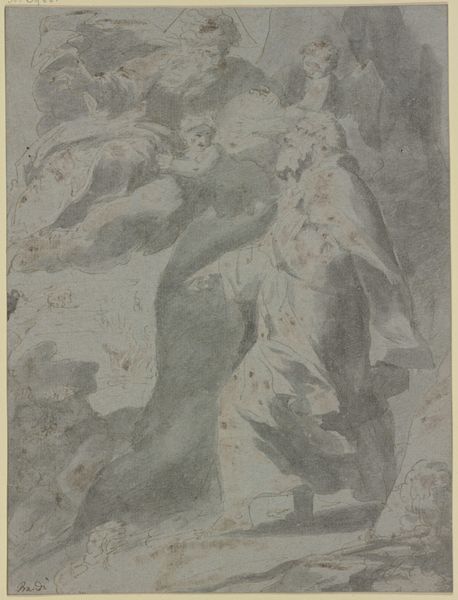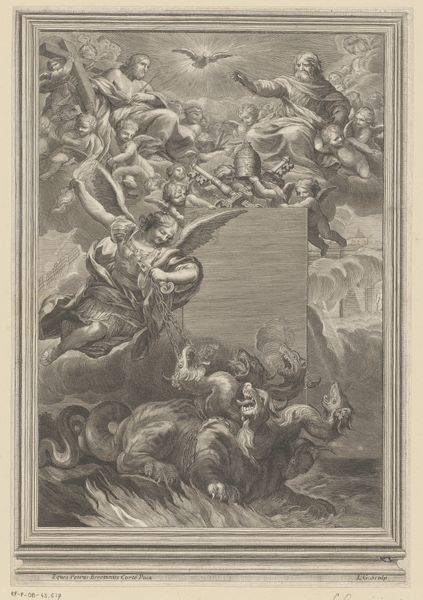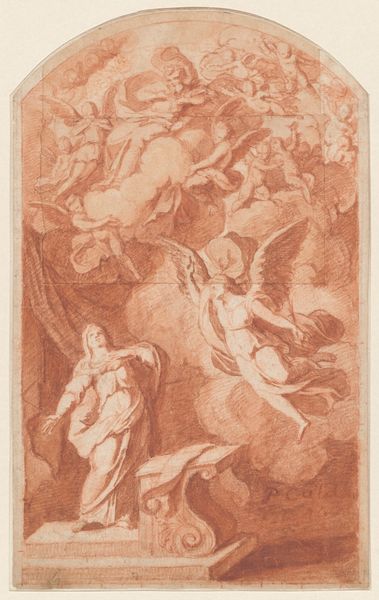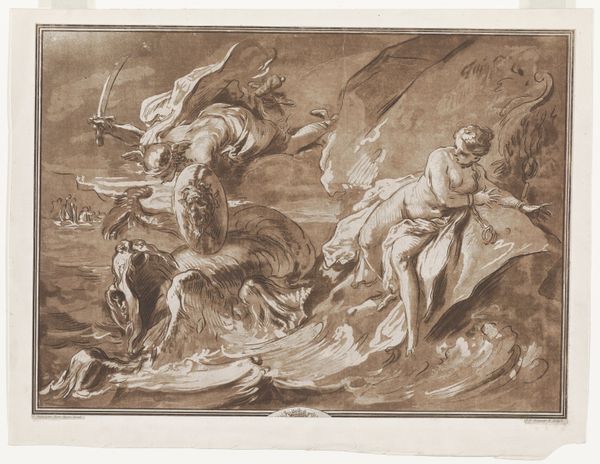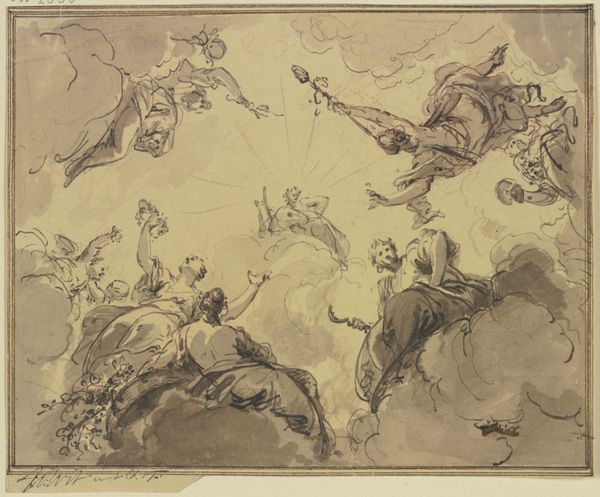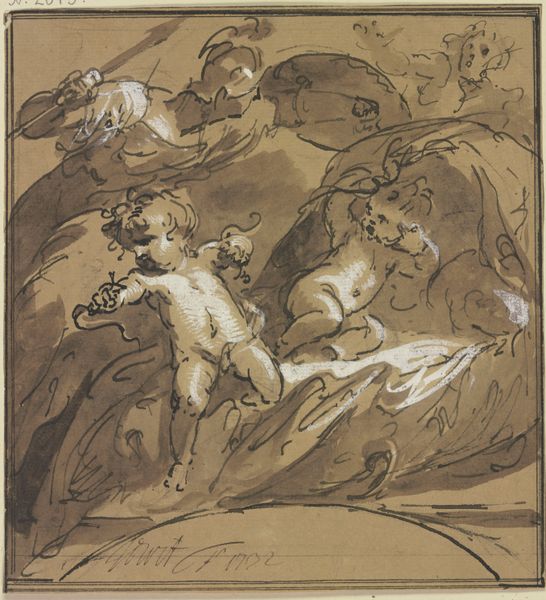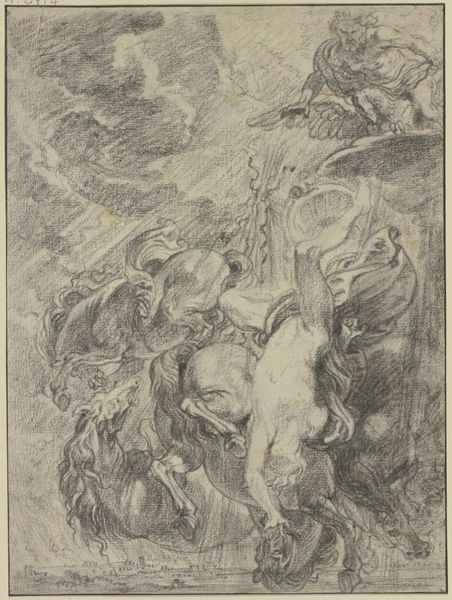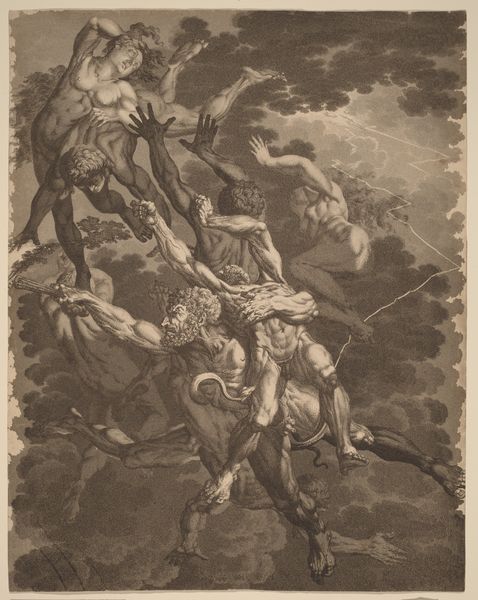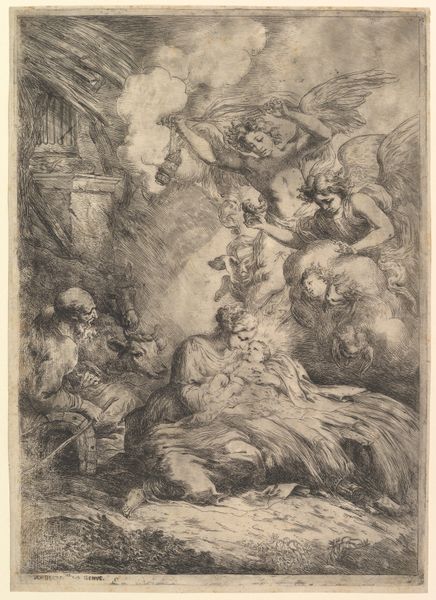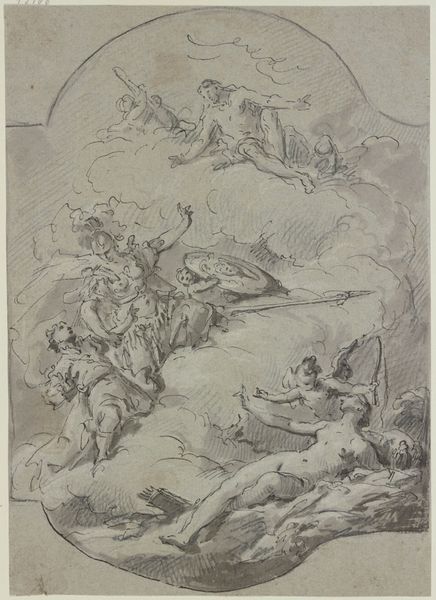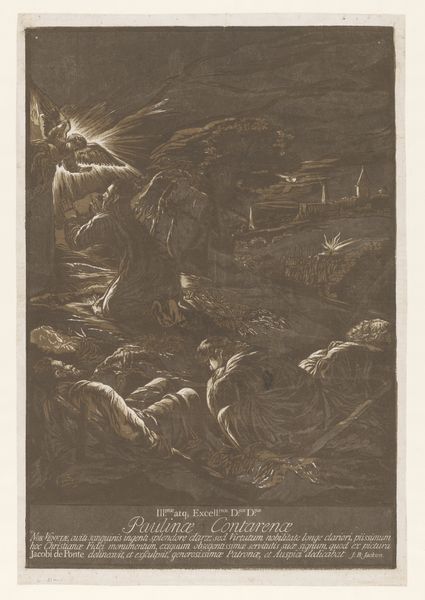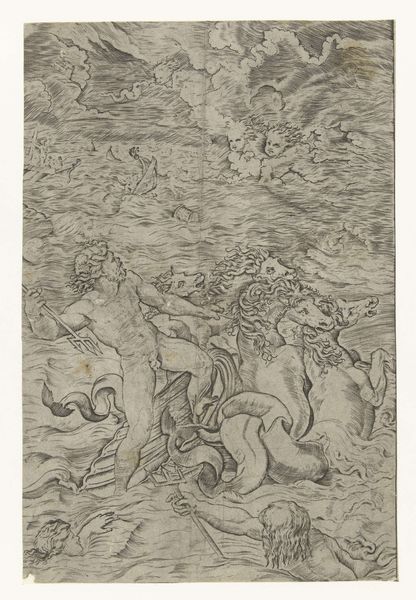
drawing, gouache, ink
#
drawing
#
baroque
#
gouache
#
landscape
#
figuration
#
oil painting
#
ink
#
15_18th-century
#
history-painting
#
watercolor
Copyright: Public Domain
Curator: Welcome. We’re looking at *Stürzende Männer und Pferde (Fragment einer Schlacht)*, or *Falling Men and Horses (Fragment of a Battle)*. It’s a drawing by Georg Melchior Kraus currently held at the Städel Museum. Editor: This gouache rendering creates a dizzying sense of chaos and violence, doesn’t it? It feels like the eye can’t find a resting place. Curator: Yes, the dynamic composition immediately grabs attention. Note how Kraus employs a limited palette, primarily ink and wash, to convey a scene of turmoil. Editor: The lack of bright colors really underscores the seriousness of the battle; everything looks muddy and indistinct, reinforcing the confusion of war. The focus on tumbling bodies is fascinating. Do we know the context of this fragment? Which battle might Kraus have intended to depict? Curator: Historical records regarding a specific battle it may represent remain ambiguous. We can say with some certainty, considering other works by Kraus, that it represents the tradition of history painting so en vogue during the Baroque era. The masterful deployment of chiaroscuro further heightens the dramatic intensity of the composition. Editor: Right. While the literal “history” may be difficult to pin down, one wonders how much of Kraus’ work reflects the human costs of conflict regardless of the era it allegedly depicts. I am reminded of anti-war movements and how images can shape collective trauma. Curator: Perhaps Kraus aimed to evoke broader feelings. What strikes me most, however, is how Kraus successfully renders complex forms using minimal detail. Each stroke is so deliberate. Editor: I find the active void fascinating, too. It’s hard not to bring a contemporary understanding of power structures when observing these visual narratives. Curator: A poignant and provocative reflection. Editor: Well, seeing the fallen as individuals allows for reflection on their suffering. Curator: Indeed, allowing art history to guide us provides ways to view the drawing through a variety of analytical lenses. Editor: It’s like art invites multiple truths to coexist in a single viewing.
Comments
No comments
Be the first to comment and join the conversation on the ultimate creative platform.
